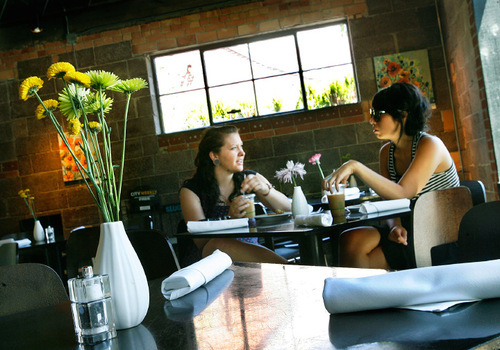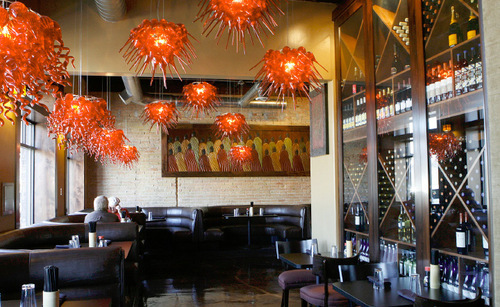This is an archived article that was published on sltrib.com in 2010, and information in the article may be outdated. It is provided only for personal research purposes and may not be reprinted.
Under a proposed liquor bill, customers could end up paying more at their favorite dining spots.
The bill, sponsored by Sen. John Valentine, R-Orem, would allow restaurants and bars to sell their liquor permits on the open market. As a result, the cost to patrons will undoubtedly go up. The only uncertainties are how high prices will climb and how much of the added cost will be passed along to consumers.
"If you have to wait for a license to become available, the delay can cost you more than the extra cost of a license sold on the open market," Valentine said. "Each individual will have to make that decision."
California is a model for the Utah bill. In that state, liquor licenses have been bought and sold as far back as anyone can remember. Although a few liquor permits become available each fall, based on population increases, licenses are so scarce that California uses a lottery system to dole them out.
The cost of a California-issued restaurant liquor license is $12,000 — while permits sold privately can range from $30,000 to $100,000, say the state's liquor officials. In New Jersey, where licenses also are bought and sold, the highest price ever paid for a single liquor permit was more than $1.5 million in 2006.
Valentine said that putting liquor licenses on the open market would be a convenience for restaurant and bar owners.
Melva Sine, CEO of the Utah Restaurant Association, said the group hasn't yet taken a position on the proposed change. But Sine said she's concerned that it may not be the right time for permit costs to go up, "given the tough economic times we're in."
Key lawmakers have rejected recommendations from legislative auditors that population quotas be eased to free up more liquor permits. Although Valentine's bill would convert 25 unused tavern licenses into restaurant permits, the number is far fewer than auditors had suggested.
Utah's quota system is unlikely to change — including a provision that places fewer restrictions on bar permits than for restaurant licenses to serve beer and wine. Since 2003, Utah has allowed one restaurant beer-and-wine permit per 9,300 statewide population, while a full bar license is one per 7,850 in population.
Valentine said he can't explain the discrepancy between bar licenses and restaurant beer-and-wine permits. But he added that, at this late date, it would be too difficult "to bring all the stakeholders" together to achieve agreement on changes to the population caps.
Valentine also acknowledged that California allows for more local control than Utah does. But he said that his research indicates some restaurant and bar owners are unhappy with the system.
California license broker Art Harris of License Locators Inc. said restaurant owners who sell permits typically are going out of business. Or they may need to downsize to take advantage of a less-expensive beer-and-wine permit.
In California, eateries may apply for beer-and-wine permits after the population cap is reached. Restaurants must show there's a public need and, typically, if local authorities agree. Beer-and-wine permits sell for $300, a fraction of full-service alcohol licenses.
Steve Ernst , assistant director of the California Department of Alcoholic Beverage Control, said eateries applying for a beer-and-wine license have a great deal of latitude in showing public need. For instance, a community may not have a Chinese restaurant on one side of town, or an eatery may be several blocks away from the nearest restaurant.
The Golden State has 22,652 beer-and-wine licenses, nearly double the number of permits allowing eateries to sell all types of alcohol.
Unlike eateries, bars have a more difficult time getting permits beyond population caps "because restaurants tend to have fewer public-safety problems," Ernst said. "People have a different mentality when they go into a restaurant for dinner than they do when they go into a bar."
Selling Utah's liquor licenses
Lawmakers are considering allowing restaurants to buy and sell liquor licenses, much like California. But California's system allows for more local control. Here's the breakdown:
Utah awards licenses based on statewide population. California's quota is based on each county's population.
Utah's 29 counties participate in a statewide license pool. California's 58 counties have countywide pools.
California issues beer-and wine-permits beyond the cap — if there's a need and local authorities don't object.
Utah allows one beer-and-wine permit per 9,300 statewide population, with no exceptions.









